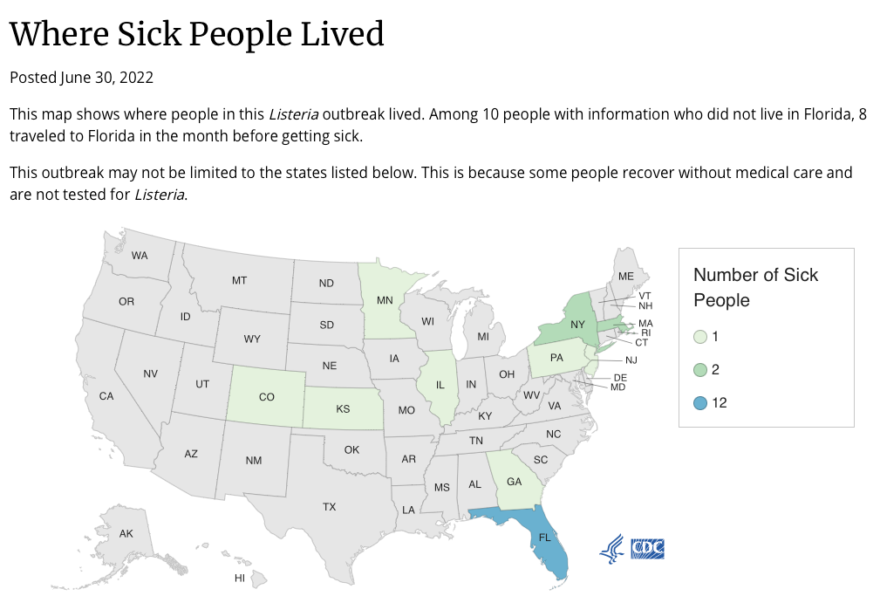
CDC, public health and regulatory officials in several states, and the U.S. Food and Drug Administration (FDA), are collecting different types of data to identify the food source of a multistate outbreak of Listeria monocytogenes infections. The investigation has not yet identified a food linked to illness.
As of June 29, 2022, a total of 23 people infected with the outbreak strain of Listeria monocytogenes have been reported from 10 states.
Of the 22 people with information, 20 sick people reported living in or traveling to Florida in the month before they got sick, although the significance of this is still under investigation. Illnesses started on dates ranging from January 24, 2021, through June 12, 2022.
Sick people range in age from less than 1 to 92 years, with a median age of 72, and 52% are male. Twenty-two people (96%) have been hospitalized. Five people got sick during their pregnancy, and one illness resulted in a fetal loss. One death has been reported from Illinois.

Public health officials are interviewing people about the foods they ate in the month before they got sick. So far, a common food item has not been identified.
Public health investigators are using the PulseNet system to identify illnesses that may be part of this outbreak. CDC PulseNet manages a national database of DNA fingerprints of bacteria that cause foodborne illnesses. DNA fingerprinting is performed on bacteria using a method called whole genome sequencing (WGS). WGS showed that bacteria from sick people’s samples are closely related genetically. This means that people in this outbreak likely got sick from the same food.